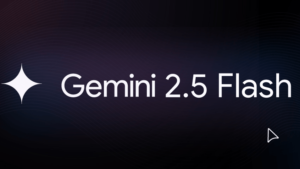OpenAI Upgrades GPT-4o with New Features, Blames GPU Shortage for Lack of GPT-4.5 Update

OpenAI Enhances GPT-4o with Advanced Features
OpenAI has recently made notable improvements to its GPT-4o model, showcasing its commitment to advancing artificial intelligence technology. This update includes a variety of powerful features that improve the user experience while addressing the ongoing challenges posed by GPU shortages.
What is GPT-4o?
GPT-4o is an upgraded version of OpenAI’s GPT-4 model, known for its ability to generate human-like text. This version is designed to facilitate better interaction and response accuracy in various applications, from conversational agents to content generation.
Key Features of GPT-4o
Improved Understanding: The latest enhancements allow GPT-4o to grasp context more effectively, which translates to more coherent responses. This makes it particularly useful in applications requiring in-depth conversations or technical discussions.
Enhanced Creativity: The model is now better at producing creative content, whether for storytelling, marketing copy, or brainstorming ideas. This creativity makes it a versatile tool for various industries.
Faster Response Time: Users can expect quicker replies, significantly improving the overall user experience. This is particularly important for real-time applications where speed is essential, such as customer service chats.
Multi-modal Capabilities: GPT-4o introduces features that allow it to handle both text and visual inputs. This means it can analyze images and provide descriptions or insights based on them, expanding its potential use cases.
- Advanced Fine-tuning Options: The model allows developers to customize its behavior more easily, catering to specific industries or tasks. This flexibility enables businesses to tailor the AI to their unique needs.
GPU Shortages Affecting Development
Despite these enhancements, OpenAI has cited ongoing GPU shortages as a significant factor in delaying the release of the anticipated GPT-4.5 update. The scarcity of these essential components hampers the development process, impacting not only OpenAI but the entire AI landscape.
Impact of GPU Shortages
Slower Innovation: With fewer GPUs available, the pace at which new features and models are being developed is slowed down. This limits the advancements that can be made within the field of artificial intelligence.
Increased Costs: The high demand for GPUs has driven prices up, making it more expensive for organizations to invest in AI development. This may result in reduced research budgets and fewer innovations in the short term.
- Accessibility Challenges: Small businesses and startups often struggle to acquire the necessary hardware to compete with larger organizations, leading to a disparity in AI capabilities across the industry.
Future Perspectives
OpenAI continues to focus on leveraging GPT-4o’s advanced features while navigating the challenges posed by GPU shortages. By enhancing the capabilities of GPT-4o, users can benefit from a powerful AI tool that meets a range of needs across various sectors. The adaptations made in this version show promise for future advancements, even as supply chain issues persist in the tech world.
Overall, advancements in AI like those seen in GPT-4o represent significant progress in the field, with potential applications that extend far beyond simple text generation. As OpenAI tackles GPU-related challenges, the expectations for future models, including the much-anticipated GPT-4.5, remain high.






